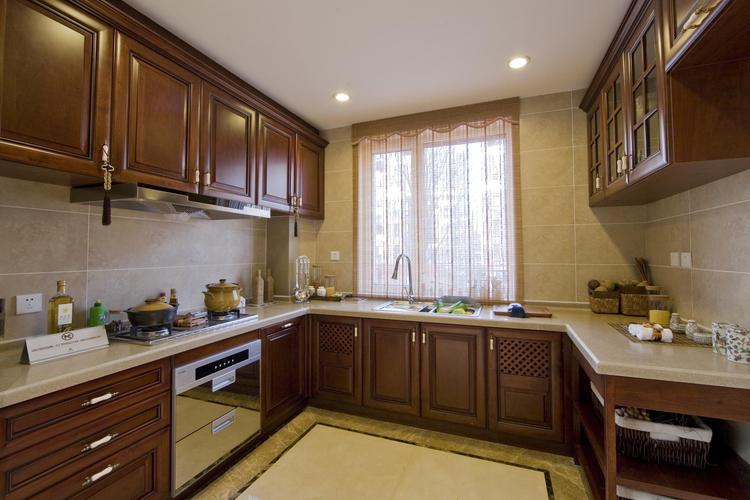2024年3月5日发(作者:)
IES
IES
IES
IES
IES
IES
IES
IES
IES
IES
IES
IES
IES
IES
IES
IES
IES
IES
三维模型的建立
三维模型的建立模型分为Model,Surface,Opening三个层次,单击其右侧的上下箭头,可以进入不同的层次。但选中模型整体或某个房间时,上下箭头被激活点击”ModelIT”,进入模型绘制界面视图分为俯视图、右视图、左视图、前视图、后视图及轴视图,只有在二维状态下才可以画图,所以画图时首先把这个设置为前五种二维视图。基本形体画图按钮,IES中可以画的基本形体有:不规则形体、长方体、椎体、球体、半球体、圆柱,单击某个按钮后,可以在绘绘图区绘制相应的形体绘相应
三维模型的建立点击菜单上的”Settings”,可以分别设置绘图时常用的图层、网格点密度、光标跟踪方式以及模型设定。可以选择扑捉的对象,从而方便建模可以改变网格密度,较小的网格可以使扑捉网格时的建模更加方便准确。房间种类:Room:模拟分析对象,参与所有计算;AdjacentBuilding:目标建筑的临近建筑;Adjacent BuildingTopographic Shad:地形遮挡物;Local Shade:遮阳构建等。后三种房间种类参与日照计算,既考虑这些物体对目标建筑的遮挡效果;但不参与热模拟,从而节省计算时间。定义模型中如何区分外墙和内墙,检查模型对错以及设置房间种类等。
三维模型的建立Move:将所选择的房间移动到新的位置,用法类似于“复制”Rotate:旋转,将所选中的房间按照某个轴进行旋转Mirror:将所选择的房间按照某个轴镜像一个镜像个新的房间;Connect:将所选择的多个房间合为一间合为个房间;Texture:InnerVolume:Height:改变房对所选择的房改变所间表面间增减内部体选房间的纹理Delete:积表示;的高度;和材料;删除;Copy:选中某个房间,点击该按钮,可以复制所选的房间,移动鼠标将复制房间移动新的位置,可以使用dx=*,*来将复制房间放置到某个特定位置Scale:可以将所选择的房间扩大或者缩小,点击该按钮,在对话框中输入各个方向缩小或扩大的比例,点击目标房间即可;Drag:选Editattribute:Editglazing:中某个面改变所选择房为所选的房间后可以沿间的层和颜色;增添玻璃;着该面的法线方向移动该面;Roof:为所选房间自动产生屋顶;Refresh:刷新;常用编辑命令列表
三维模型的建立房间种类选择某个绘制形状设置好房间属性后,使用鼠标在作图区域绘制所选的基本形状,利用不同的基本形状组成所要的建筑设置房间起始平面高度及层高将房间模板赋予房间
三维模型的建立建好模型后,点击“望远镜”或者“放大镜”按钮,可以观察所绘制房间的三维效果图。
三维模型的建立如果要精确建模的话,可以在输入框里面输入相关命令,如X=0,0X0,0表示某表示某一点位置为点位置为0,0;dx=10,10表示相对上一点的相对坐标为10,10的点;p=10,30表示相对于上一点的距离为10,相对于正x轴夹角为30度的点。使用方法:首先选择要画的基本形体然后输入x=*,*,表示图形的起点,回车;再输入dx=*,*来画一段线段。
三维模型的建立选择不规则形体或者椎体后,在绘图区确定第一点后,则画弧工具被激活设置好圆弧后,点击绘图区某点或者使用输入命令确定圆心,则可以完成一段圆弧的绘制。点击画弧按钮,出现画弧对话框,设置所画圆弧的弧度及用多少个多线段来替代圆弧。如果所选的多线段越多,则圆弧越光滑,但计算量越大计算量越大。注:画弧每次最大的角度要小于360度。
三维模型的建立使用上述命令,可以方便地建立各种基本形状
三维模型的建立在模型层次(Model),选择某个房间,点击”Edit Glazing”按钮,增加窗户按照窗墙比在外墙上增加窗户按照窗墙比和窗户高度两个参数在外墙上增加窗户根据窗户高度、宽度以及窗户之间间距来控制增加窗户加窗户方法一
三维模型的建立在模型层次(Model),选择某个房间,点击”AddAdd WindowsWindows”按钮,增加窗户在窗户对话框中确定窗户的起始高度定窗户的起始高度,窗户的高度和宽度等用鼠标点击外墙的某点将所选择某一点,将所选择的窗户加在该位置加窗户方法二
三维模型的建立选中某个面,一直按向下的箭头,到Opening层次点击”Add Windows”按钮,可以直接在面上画出窗户,可以使用dx=*,*来控制起点和终点。第一个dxdx=*,*,表示相对于房间左下角的坐标* 可以按照加窗户的方法二三来增加门或者洞加窗户方法三
三维模型的建立可以在该窗口使用和ModelIT类似的命令来建立各种部件点击“CompLib”按钮,进入部件绘制窗口从库中读入各种部件,部件所在位置为:安装盘Program FilesIESVE
6appsComponents里面有各种部件,读入后会在右侧窗口显示该部件的视图,点击“Add”按钮将所选部件读入到项目中或者点击该按钮,从已有的部件库中来增添部件到项目中
三维模型的建立读入部件后点击“Component Viewer”,会显示部件的三维效果图
同时视图保持平面视图三维模型的建立选择某个房间,点击向下箭头达到Surface层次,箭头,达到层次在Surface下拉菜单下选择Component读入部件后,点击“ModelIT”,回到建模窗口
三维模型的建立设置好部件的属性后,点击“Place Component”按钮,并用鼠标在房间内选择部件的位置,及可以将部件加入到房间里。当将下拉菜单选择为Component后,出现Place
Component 对话框,选择所需要的部件并可以设置所需要的部件,并可以设置部件的起始高度,旋转角度,三个方向的缩放比例等
三维模型的建立将部件加入到房间后,点击“Model Viewer”,可以观看部件加入到房间后的效果部件(Components)的作用:部件主要用于采光及室内CFD模拟,此时可以通过设置让房间里的部件参与采光可以通过设置,让房间里的部件参与采光或者CFD计算,从而反应部件对采光或者通风的影响;在热模拟中,部件不起作用,因为诸如人这样的内热源是通过设置房间的内部得热量项来得到的,与部件无关。
三维模型的建立点击“ModelIT”菜单,然后单击“Attach DXF File”,读入DXF文件。选择要读入的DXF文件注意DXF文件建立的长度单位,如果CAD里面的单位为毫米,则应该更改长度单位,IES缺省为米
三维模型的建立DXF文件要求:读入DXF文件后在IES的绘图窗口显示DXF文件1、各个房间由外墙、内墙、窗户或者门组成一个封闭的空间;2、每个房间都使用单行字英文或者数字进行命名;3、门由、门由一条垂直于门开口的条垂直于门开口的竖线和连接门开口及竖线顶端的斜线或者90度的圆弧组成;4、窗户可以使用比墙厚、或者比墙薄或者等同于墙厚的长等方形来表示;5、建筑模型各个部件应该使用线段来描画不要使用块用线段来描画,不要使用块,如果使用块的话,要将模型轰开。
读入DXF文件后,点击菜单文件后点击菜单上的Tools,然后点击“Construct-DXF”命令三维模型的建立进入拉伸设置对话框点击“Settings“,进入参数设置
三维模型的建立功能标签英文参数Maximum Arc-Charddistance
Line ExtensionMaximumHorizontal
Separation
Maximum Vertical SeparationLine
CombinationConnecting AngleMaximum Separation
DistanceBase PlaneStorey HeightHeightWindow CillHeightWindow HeightDoor HeightDoorMin/Max Door WidthMin./MaxDoorWidthMax. Door Recess Depth中文解释DXF文件中用多线段来替代弧线,线段与弧线之间的最大距离,该值越小,多线段越逼近弧线,但计算量越大小于该值的线段缝隙程序自动连接水平方向上距离小于该值的两面墙认为是内墙竖直方向上距离小于该值的两层楼板认为是内部楼板如果两条线的夹角大于该角度如果两条线距离小于该距离,满足这两个条件,则合并两条线段房间起始高度层高窗台高度窗户高度门高度门的最小/大宽度门框的最大厚度Tolerance
三维模型的建立功能标签英文参数Min./Max Width
Maximum OffsetWindowsMinimumNumberMinimum NumberLayer SearchVoidKey LabelsStacked最小/最大窗户宽度如果窗户比墙厚或者窄的话,其与墙的差别如果窗户中有多个线段,多个线段的数目(不包含两端如果窗户中有多个线段多个线段的数目(不包含两端的线段)是不是开启寻层功能(就是在某个图层中寻找窗户)如果将房间名称放在其后面,拉起后,则房间所在的位置为空(经常用于中庭的建模)如果将房间名称放在其后面,多个楼层拉起后,则房间所在的位置为一个上下连同的房间(经常用于楼梯间、电梯间建模)选择所拉起房间的房间模板中文解释Template
三维模型的建立设置完相关参数后,点击“Extract”命令,可以将二维图拉伸为三维模型
Brochure
More information from /reports/592260/
BIM Handbook: A Guide to Building Information Modeling forOwners, Managers, Designers, Engineers and Contractors
Description:Discover BIM: A better way to build better ng Information Modeling (BIM) is a new approach to design, con-struction, and facilitymanagement in which a digital representation of the building process is used to facilitate theexchange and interoperability of information in digital format. BIM is beginning to change the waybuildings look, the way they function, and the ways in which they are designed and Handbook: A Guide to Building Information Modeling for Owners,Managers, Designers,Engineers, and Contractors provides an in-depthunderstanding of BIM technologies, the businessand organizational issues associated with its implementation, and the profound advantages thateffective use of BIM can provide to all members of a project team. The Handbook:-Introduces Building Information Modeling and the technologies that support it-Reviews BIM and its related technologies, in particular parametric and object-oriented modeling,its potential benefits, its costs, and needed infrastructure-Explains how designing, constructing, and operating buildings with BIM differs from pursuing thesame activities in the traditional way using drawings, whether paper or electronic-Discusses the present and future influences of BIM on regulatory agencies; legal practiceassociated with the building industry; and manufacturers of building products-Presents a rich set of BIM case studies and describes various BIM tools and technologies-Shows how specific disciplines—owners, designers, contractors, and fabricators—can adopt andimplement BIM in their companies-Explores BIM's current and future impact on industry and societyPainting a colorful and thorough picture of the state of the art in Building Information Modeling, theBIM Handbook guides readers to successful implementations, helping them to avoid needlessfrustration and costs and take full advantage of this paradigm-shifting approach to build betterbuildings, that consume fewer materials, and require less time, labor, and capital resourcesAuthors bio:Chuck Eastman is a Professor in the Colleges of Architecture and Computing at Georgia Institute ofTechnology, Atlanta, and Director of the College of Architecture PhD Program, where he leadsresearch in IT in building design and construction. He has been active in building modeling researchsince the 1970s and has worked with a variety of industry groups developing BIM Teicholz, Professor Emeritus at Stanford University, founded the Center for Integrated FacilityEngineering (CIFE) at Stanford University in 1988 and directed that program for 10 years. He wasnamed the Construction Management "Man of the Year" by the American Society of Civil Engineersin 1985 and awarded the Henry C. Turner Prize for Innovation in Construction Technology by theNational Building Museum in Sacks, an Associate Professor in Structural Engineering and Construction Management atTechnion–Israel Institute of Technology, founded and leads the BIM Laboratory at the IsraelNational Building Research Institute. He has conducted primary and applied BIM research forindustry, government, and public organizations in North America, Europe, and en Liston, a technology con-sultant and PhD candidate at Stanford University, co-foundedCommon Point technologies, a construction simulation software company. She has held positions atAutodesk, and worked on projects dev-eloping technologies and processes to implement
3D/4D/BIM with a variety of organizations including Walt Disney, Mort-enson, URS, and Parsons-Brinckerhoff.
Contents:R 1: BIM HANDBOOK INTRODUCTION.1.1 Introduction.1.2 The Current AEC Business Model.1.3 Documented Inefficiencies of Traditional Approaches.1.4 BIM: New Tools and New Processes.1.5 What Is Not BIM Technology.1.6 What Are the Benefits of BIM, What Problems Does It Address?.1.7 What Challenges Can Be Expected?.1.8 Future of Designing and Building with BIM (Chapter 8).1.9 Case Studies (Chapter 9).CHAPTER 2: BIM TOOLS AND PARAMETRIC MODELING.2.0 Executive Summary.2.1 History of BIM Technology.2.2 Varied Capabilities of Parametric Modelers.2.3 Overview of the Major BIM model generating systems.2.4 R 3: INTEROPERABILITY.3.0 Executive Summary.3.1 Introduction.3.2 Different Kinds of Exchange Formats.3.3 Background of Product Data Models.3.3.1 IFC Relation to STEP.3.3.2 Organization of IAI.3.3.3 What Are the IFCs?.3.3.4 IFC Coverage.3.3.5 IFC in Use.3.3.6 Implications of IFC Use.3.3.7 The Future of IFC.3.4 XML Schemas.
3.5 Portable, Web-Based Formats: DWF and PDF.3.6 File Exchange Versus Building Model Repositories.3.7 R 4: BIM FOR OWNERS AND FACILITY MANAGERS.4.0 Executive Summary.4.1 Introduction: Why Should Owners Care About BIM?.4.2 BIM Application Areas for Owners.4.2.1 Cost Reliability and Management.4.2.2 Time to Market: Schedule Management.4.2.3 Complexity of Building Infrastructure and Building Environment.4.2.4 Sustainability.4.2.5 Overcoming Labor Shortage, Education, and Language Barriers.4.2.6 Design Assessment.4.2.7 Facility and Information Asset Management.4.3 Types of Owners: Why, How Often, and Where They Build.4.3.1 The BIM Business Case.4.3.2 Operating Owners vs. Developer Owners.4.3.3 When Owners Build: One-Time or Serial.4.4 How Owners Build.4.4.1 Single Stage, Traditional, or Design-Bid-Build.4.4.2 Design-Build.4.4.3 Collaborative Process.4.4.4 Internal or External Modeling.4.5 BIM Tool Guide for Owners.4.5.1 BIM Estimating Tools.4.5.2 Model Validation, Program, and Code Compliance.4.5.3 Project Communication and Model Review Tools.4.5.4 Model Viewing and Review.4.5.5 Model Servers.4.5.6 Facility and Asset Management Tools.4.5.7 Operation Simulation Tools.4.6 An Owner and Facility Manager's Building Model.
4.7 Leading the BIM Implementation on a Project.4.7.1 Build Internal Leadership and Knowledge.4.7.2 Service Provider Selection.4.7.3 Build and Educate a Qualified Network of BIM Service Providers.4.7.4 Change Deliverable Requirements: Modify Contracts and Contract Language.4.8 Barriers to Implementing BIM: Risks and Common Myths.4.8.1 Process Barriers.4.8.2 Technology Risks and Barriers.4.9 Guidelines and Issues for Owners to Consider When Adopting R 5: BIM FOR ARCHITECTS AND ENGINEERS.5.0 Executive Summary.5.1 Introduction.5.2 Scope of Design Services.5.2.1 The Concept of Information Development.5.2.2 Technical Collaborations.5.3 BIM Use in Design Processes.5.3.1 Concept Design and Preliminary Analyses.5.3.2 Building System Design and Analysis/Simulation.5.3.3 Construction-Level Building Models.5.3.4 Design-Construction Integration.5.3.5 Design Review.5.4 Building Element Models and Libraries.5.4.1 Object Libraries.5.4.2 Portals.5.4.3 Desktop/LAN Libraries.5.4 Considerations in Adoption for Design Practice.5.5.1 BIM Justification.5.5.2 Training and Deployment.5.5.3 Phased Utilization.5.6 New and Changed Staffing within Design Firms.5.7 New Contractual Opportunities in Design.
CHAPTER 6: BIM FOR THE CONSTRUCTION INDUSTRY.6.0 Executive Summary.6.1 Introduction.6.2 Types of Construction Firms.6.3 Information Contractors Want from BIM.6.4 Processes to Develop a Contractor Building Information Model.6.5 Reduction of Design Errors Using Clash Detection.6.6 Quantity Takeoff and Cost Estimating.6.6.1 Export Quantities to Estimating Software.6.6.2 Directly Link Bim Components to Estimating Software.6.6.3 Quantity Takeoff Tool.6.6.4 Guidelines and BIM Implementation Issues to Support Quantity Takeoff and Estimating.6.7 Construction Analysis and Planning.6.7.1 4D models to support construction planning.6.7.2 Benefits of 4D Models.6.7.3 4D Modeling Processes.6.7.4 BIM-Supported Planning and Scheduling Issues and Guidelines.6.8 Integration with Cost and Schedule Control and Other Management Functions.6.9 Use for Offsite Fabrication.6.10 Use of BIM Onsite: Verification, Guidance, and Tracking of Construction Activities.6.11 Implications for Contract and Organizational Changes.6.12 BIM R 7: BIM FOR SUBCONTRACTORS AND FABRICATORS.7.0 Executive Summary.7.1 Introduction.7.2 Types of Subcontractors and Fabricators.7.2.1 Engineered-To-Order (ETO) Component Producers.7.2.2 Design Service Providers.7.2.3 Specialist Coordinators.7.3 The Benefits of a BIM Process for Subcontractor Fabricators.7.3.1 Marketing and Tendering.7.3.2 Reduced Production Cycle-Times.
7.3.3 Reduced Design Coordination Errors.7.3.4 Lower Engineering and Detailing Costs.7.3.5 Increased Use of Automated Manufacturing Technologies.7.3.6 Increased Pre-Assembly and Prefabrication.7.3.7 Quality Control, Supply Chain Management, and Life-Cycle Maintenance.7.4 BIM-Enabled Process Change.7.4.1 Leaner Construction.7.4.2 Less Paper in Construction.7.4.3 Increased Distribution of Work.7.5 Generic BIM System Requirements for Fabricators.7.5.1 Parametric and Customizable Parts and Relationships.7.5.2 Reporting Components for Fabrication.7.5.3 Interface to Management Information Systems.7.5.4 Interoperability.7.5.5 Information Visualization.7.5.6 Automation of Fabrication Tasks.7.6 Major Classes of Fabricators and Their Specific Needs.7.6.1 Structural Steel.7.6.2 Precast Concrete.7.6.3 Cast-In-Place (CIP) Reinforced Concrete.7.6.4 Curtain Walls and Fenestration.7.6.5 Mechanical, Electrical and Plumbing (MEP).7.7 Adopting BIM in a Fabrication Operation.7.7.1 Setting Appropriate Goals.7.7.2 Adoption Activities.7.7.3 Planning the Pace of Change.7.7.4 Human Resource Considerations.7.8 R 8: THE FUTURE: BUILDING WITH BIM.8.0 Executive Summary.8.1 Introduction.
8.2 The Development of BIM Up To 2007.8.3 Current Trends.8.4 Vision 2012.8.4.1 Impact on the Design Professions: Shifting Services and Roles.8.4.2 Impact On Owners: Better Options, Better Reliability.8.4.3 Impact on Construction Companies: BIM at the Construction Site.8.4.4 Impact on Construction Contracting: Closer Collaborations Among Designers and Contractors.8.4.5 Impact on Construction Education: Integrated Education.8.4.6 Impact on Statutory Authorities: Planting the Seeds of Online Access and Review.8.4.7 Impact on Project Documentation: On-Demand Drawings.8.4.8 Impact on BIM Tools: More Integration, More Specialization, More Information.8.4.9 Impact on Research: Model Analysis, Simulation, and Work Processes.8.4.10 Vision 2012: The Limitations.8.5 Drivers of Change and BIM Impacts up to 2020.8.5.1 Economic, Technological, and Societal Drivers.8.5.2 Obstacles to Change.8.5.3 Development of BIM Tools.8.5.4 Role of Drawings.8.5.5 Design Professions: Providing New Services.8.5.6 Integrated Design/Build Services and Agreements.8.5.7 Building Product Manufacturers: Intelligent Product Specs.8.5.8 Construction Regulation: Automated Code-Checking.8.5.9 Lean Construction and BIM.8.5.10 Construction Companies: Information Integration.8.5.11 BIM Skills and Employment: New R 9: BIM CASE STUDIES.9.1 Flint Global V6 Engine Plant Expansion.9.1.1 The Project.9.1.2 The Project Team.9.1.3 The Design Process.9.1.4 The Construction Process.9.1.5 The Operation.
更多推荐
房间,点击,建立,选择,模型,部件









发布评论